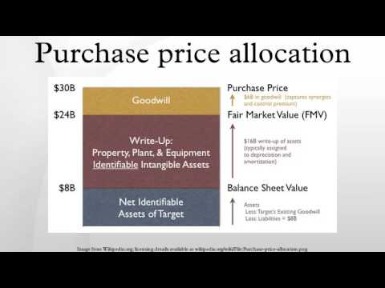Content

Besides his extensive derivative trading expertise, Adam is an expert in economics and behavioral finance. Adam received his master’s in economics from The New School for Social Research and his Ph.D. from the University of Wisconsin-Madison in sociology. He is a CFA charterholder as well as holding FINRA Series 7, 55 & 63 licenses. He currently researches and teaches economic sociology and the social studies of finance at the Hebrew University in Jerusalem. You can learn more about these methods in our detailed blog post or in our guides here.
On its balance sheet, it has liabilities of $170 billion with a remaining cash balance of $11 billion. Plug those numbers into the formula, and you get $209 billion. If you don’t have plans to sell soon, and you just want an idea of what your business is worth, an annual valuation is appropriate. Others may suggest an annual valuation done by your own calculations and speaking with an appraiser every couple of years.
When To Sell Your Business: Paper Product Manufacturer In California
Successful applicants earn the right to use the ABV designation with their names, which can improve job opportunities, professional reputation and pay. In Canada, Chartered Business Valuator is a professional designation for business How To Calculate Your Business Valuation valuation specialists. It is offered by the Canadian Institute of Chartered Business Valuators . Liquidation value is the net cash that a business will receive if its assets were liquidated and liabilities were paid off today.
You can incorporate your assumptions and expectations about the future of the company into a DCF calculation. If the company isn’t heavily traded, the share price may not mean much. The investors buying up the stock may not have made a serious valuation of the business. If you’re looking for financing, https://kelleysbookkeeping.com/ lenders, investment bankers and venture capitalists will want to know what company’s worth. Calculating the worth of a business is essential if you’re buying or selling, but that’s not the only reason. We accept payments via credit card, wire transfer, Western Union, and bank loan.
How To Calculate Valuation Of A Business
Every month, NIMBO publishes the currently observed EBIT, EBITDA, EBITC and sales multiples for various countries, company sizes and industries. Please also read the detailed explanation of the individual multiples including a detailed example. To entice a buyer, therefore, the price must be set at a point that makes this short-term repayment possible. To determine the company’s debt-paying ability, you’d need to start with the historical free cash flow. Interest on any existing loans is usually ignored, so that you start with a picture of the company as if it were debt-free.
- Then you will simply need to pull the asset value, liability value and intangible asset value from the balance sheet as highlighted in the example balance sheet below.
- The net asset value method is also used when other methods lead to negative evaluations.
- In practice, this value is often equated with the total value of the company.
- Business valuations are used for mergers, acquisitions, tax purposes and more.
You should consider the counsel of a financial services professional before making any type of investment or financial decision. We also encourage you to review your investment strategy periodically as your financial circumstances change. This module is hypothetical and is provided for illustration purposes only. It is not indicative of the performance of any specific investment product or strategy.
How to Calculate the Valuation of a Company
They are not interested in calculating the terminal value, weighted average cost of capital or discounted future cash flow of earnings. Discounted cash flow analysis is the process of estimating the value of a company or investment based on the money, or cash flows, it’s expected to generate in the future. Discounted cash flow analysis calculates the present value of future cash flows based on the discount rate and time period of analysis. The formula we use is based on the Multiple of Earnings method which is most commonly used in valuing small businesses. The multiple is similar to using a discounted cash flow or capitalization rate used by top business valuation appraisers and top analysts.

Say your market grew by 15 percent last year and your business grew by 14 percent. You now have reasonable evidence suggesting to investors and buyers that they can expect similar growth levels as those predicted by industry experts. The DCF method does not take other companies’ results into account. You’ll give your best cash flow forecast for the next three to five years. Then, using a formula, you’ll calculate the present value of those cash flows. This approach bases the valuation of the business on what you’d get if you closed it, sold the assets, and paid off your debts.
A business valuation might include an analysis of the company’s management, its capital structure, its future earnings prospects or the market value of its assets. The tools used for valuation can vary among evaluators, businesses, and industries. Common approaches to business valuation include a review of financial statements, discounting cash flow models and similar company comparisons. Under the income approach, create a forecast of the expected cash flows of a business for at least the next five years, and then derive the present value of those cash flows. There can be many adjustments to the projected cash flows that can have a profound impact on the present value figure.
